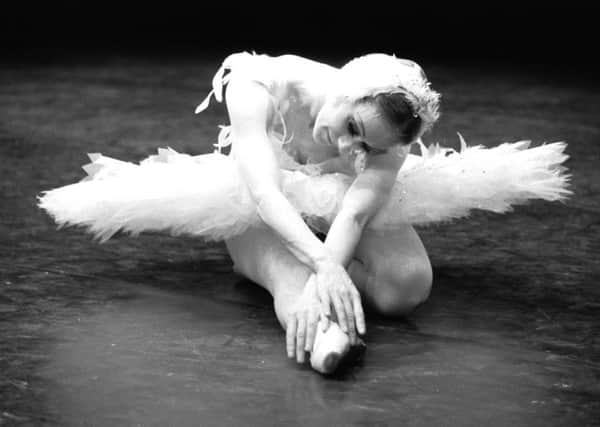Elaine McDonald


The late choreographer Martha Graham once said that every dancer dies twice – first when they stop dancing, then again when they actually pass away. But it could be said that Elaine McDonald died three times: once when she hung up her pointe shoes, twice when she suffered a stroke that cruelly restricted what her once-agile body could do, and then finally on 9 December this year when her death was announced at the age of 75.
Although born in Yorkshire and trained in London, McDonald’s connection with Scotland spanned more than two decades and was as important to the country as it was to her. Known as “Scotland’s first ballerina”, her world-class technique and dramatic interpretation shone far beyond the Scottish Ballet Glasgow headquarters she called home. Performer, muse, company leader – McDonald’s career saw her win over crowds at home and abroad, including performances at the Edinburgh International Festival and partnering Rudolf Nureyev in La Sylphide in Madrid and at the London Coliseum.
Advertisement
Hide AdAdvertisement
Hide AdLike most dancers, McDonald started young, taking dance classes near her Scarborough home before winning a competition aged 11, run by the Royal Academy of Dance, to study ballet in Leeds. From there her talent and skill bought her a place at the prestigious Royal Ballet School in London. Upon graduating, she joined the shortlived London Ballet Company, before moving on to the Western Theatre Ballet – a move which was to define her entire dancing career. Based in Bristol, the company was founded by innovative choreographer Peter Darrell, who struck up a strong artistic relationship with McDonald. Classical ballet may be steeped in tradition, but both Darrell and McDonald were forward-looking, and works such as Mods and Rockers, set to music by The Beatles, marked the company out as fresh and modern.
When Darrell was invited to relocate his company to Glasgow in 1969 and provide Scotland with a national ballet company, McDonald moved with him. She helped him shape the newly renamed Scottish Theatre Ballet, which changed its name a second time to Scottish Ballet five years later. A Soloist before the move to Glasgow, she was soon promoted and danced her first role as a Principal in Darrell’s Beauty and the Beast at the Theatre Royal in 1969, to a specially commissioned score by Thea Musgrave.
From there, roles in Darrell’s exciting adaptations of traditional works throughout the 1970s, such as Giselle, The Tales of Hoffmann and Cinderella, marked McDonald out as a force to be reckoned with, as did her talent for passionate characterisation in more modern works such as Mary Queen of Scots and Five Rückert Songs. Each time, McDonald acted as a muse to Darrell’s creativity, with the duo described as “joined at the hip” during the rehearsal process.
Known for her powerful stage presence, McDonald regularly received glowing notices from the national press. Reviewing her in Danish choreographer August Bournonville’s Napoli in 1980, in which she danced the role of Teresina, Scotsman critic Geoffrey Baskerville said “McDonald’s ethereal grace, brilliant technique and dramatic powers make her one of the greatest dancers of our day.”
McDonald was made an OBE for services to dance in 1983 and then, with Darrell’s untimely death in 1987 aged just 58, she took over the helm at Scottish Ballet. With the company in a state of flux after losing its founder, roles and responsibilities became complicated. McDonald was given the job title of Artistic Controller but just over a year later a management restructure saw her step down.
In 1999 she suffered a stroke which was to render her disabled for the rest of her life, using a wheelchair outside and needing regular care at home. In 2011 she took Kensington and Chelsea Council to court in a bid to overturn their decision not to provide night-care, claiming they had breached her right to dignity.
Despite taking her appeal to the High Court and later to the European Court of Human Rights, she lost her right to night-time assistance. But McDonald’s appeals hit the headlines and while not a victory for her, they prompted a rethink of the role dignity has to play in human rights.
In recent years, Scottish Ballet has restaged Darrell’s much-loved Nutcracker, which McDonald danced in on many occasions. And this Christmas, all the performances of Cinderella will be dedicated to her memory – with the show’s choreographer, and Scottish Ballet’s artistic director, Christopher Hampson, addressing the audience before each show to pay homage to McDonald’s contribution to Scottish dance.
Advertisement
Hide AdAdvertisement
Hide Ad“Elaine was a rare talent, a truly creative artist and a leading ballerina of her generation,” says Hampson. “Scotland’s first ballerina dedicated her entire performing life to Scottish Ballet and in turn, we dedicate our performances of Cinderella to her memory.”
A public memorial service will be held at the Actors Church in Covent Garden, London next month.
KELLY APTER